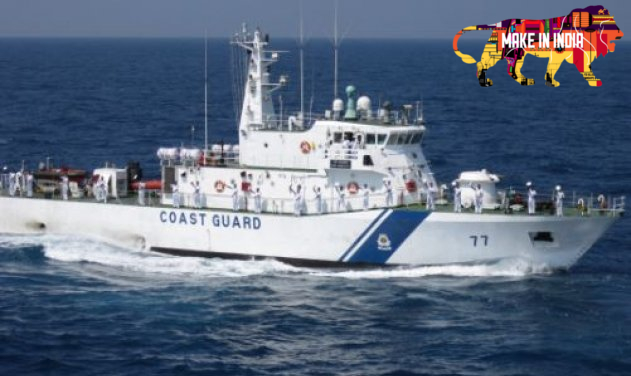To ensure that 26/11 type terror incidents never happen again, several measures have been put in place by various agencies including the Indian Navy, Indian Coast Guard and other Central and State agencies.
The Naval Commanders at a recently concluded Commander discussed reviewing procedures to strengthen the Coastal Security framework.
With a 7516.6 km coastline, 12 major ports, 184 minor ports involving 13 coastal States/UTs and 1197 island territories, these need protection at all times by Indian Navy with support from Indian Coast Guard. As part of the coastal defence against attack from the seaward side, a new strategy has been adopted with the shipbuilding programme focussed at smaller but faster, highly manoeuvrable agile crafts with better designed capability to operate in littoral waters.
Specialised boats — Fast Attack Crafts (FACs) or Fast Patrol Vessels (FPVs) for sea-based engagement of threats in coordination with facilities like Coastal Surveillance Radars are being built in India at various state-owned shipyards are being inducted in the services to protect the Indian coastline.
What exactly are Fast Attack Vessels (FAVs)?
These were first introduced into naval service with the import of two XFACs (Super Devora Class Extra Fast Attack Crafts) project from Israel in 1998-1999, followed by five more FAVs constructed by Goa Shipyard Ltd. in 2003-2005 under a collaborative contract with Israel. Having found increased operational relevance in various roles like Harbour defence and coastal protection led to the further building of ten more FAVs under ‘Car Nicobar Class’ programme by GRSE (Garden Reach Shipbuilders and Engineers Ltd.) bin 2009-2011 period. After the 26/11 Mumbai attack, the delivery time frame of these vessels was reduced to meet the operational deployment and the technology further enhanced using Water jet propulsion technology and fourteen FAVS (called WJFAVs) have since been constructed and delivered by GRSE.
Last week, GRSE handed over Fast Patrol Vessel (FPV) ICGS Annie Besant, the second in the series of five such ships, to the Indian Coast Guard. This has a medium-range vessel with a length of 50 metres, the width of 7.5 metres and displacement of around 308 tonnes, and is capable of operations in the maritime zones of the country. Designed to perform multipurpose operations like patrolling, anti-smuggling, anti-poaching and rescue operations, these are powerful, fuel-efficient platforms.
Explaining the technology behind these, Milind Kulshreshtha, C4I expert says, “These are high-speed patrol boats with the capability to undertake day-night coastal surveillance/reconnaissance and Search & Rescue missions. The speed ranges above 35 knots and high manoeuvrability are achieved through an advance propulsion system and design is for high-speed interception of vessels in territorial waters with the use of low draft for shallow water operations. With displacement of only a few hundreds of ton and unique propulsion package, these can do high speeds and are the fastest moving sea vessels of the Indian Navy.”
Propulsion & Structure
“The high speeds, manoeuvrability and shallow water operations of are achieved through an inter-linked design of hull structure, hydrodynamics and propulsion system. It is constructed using lightweight aluminium and is propelled using unique Articulate Surface Drive (ASD) propulsion system (similar to Racing boat drive system), coupled to a ‘surface piercing’ propellers (i.e. each propeller revolution keeps some blade edges above water surface to achieve better use of engine power for speed),” Kulshreshtha adds.
They come fitted with COTS radar integrated as part of Navigation system onboard and the primary weapon system is a rapid-fire Naval Stabilised Gun with associated Electro-optic day/night target detection and tracking system (to provide the Fire Control solutions). These can also be fitted with an array of portable weaponry like Heavy machine guns and portable IGLA SAM missiles.
Source: FE
Image Courtesy: DW
You may also like
-
IAF Aircraft Set Course For Exercise Eastern Bridge VII At Oman
-
IAF Set To Host The Indian Defence Aviation Exposition-II At Jodhpur
-
Defence Secretary to co-chair 5th India-Philippines Joint Defence Cooperation Committee meeting in Manila
-
Simultaneous Launch Of ‘malpe And Mulki’, Fourth And Fifth Ships Of Asw Swc (Csl) Project
-
Aatmanirbharta in Defence: MoD signs Contract with HAL for 240 AL-31FP Aero Engines for Su-30MKI Aircraft
